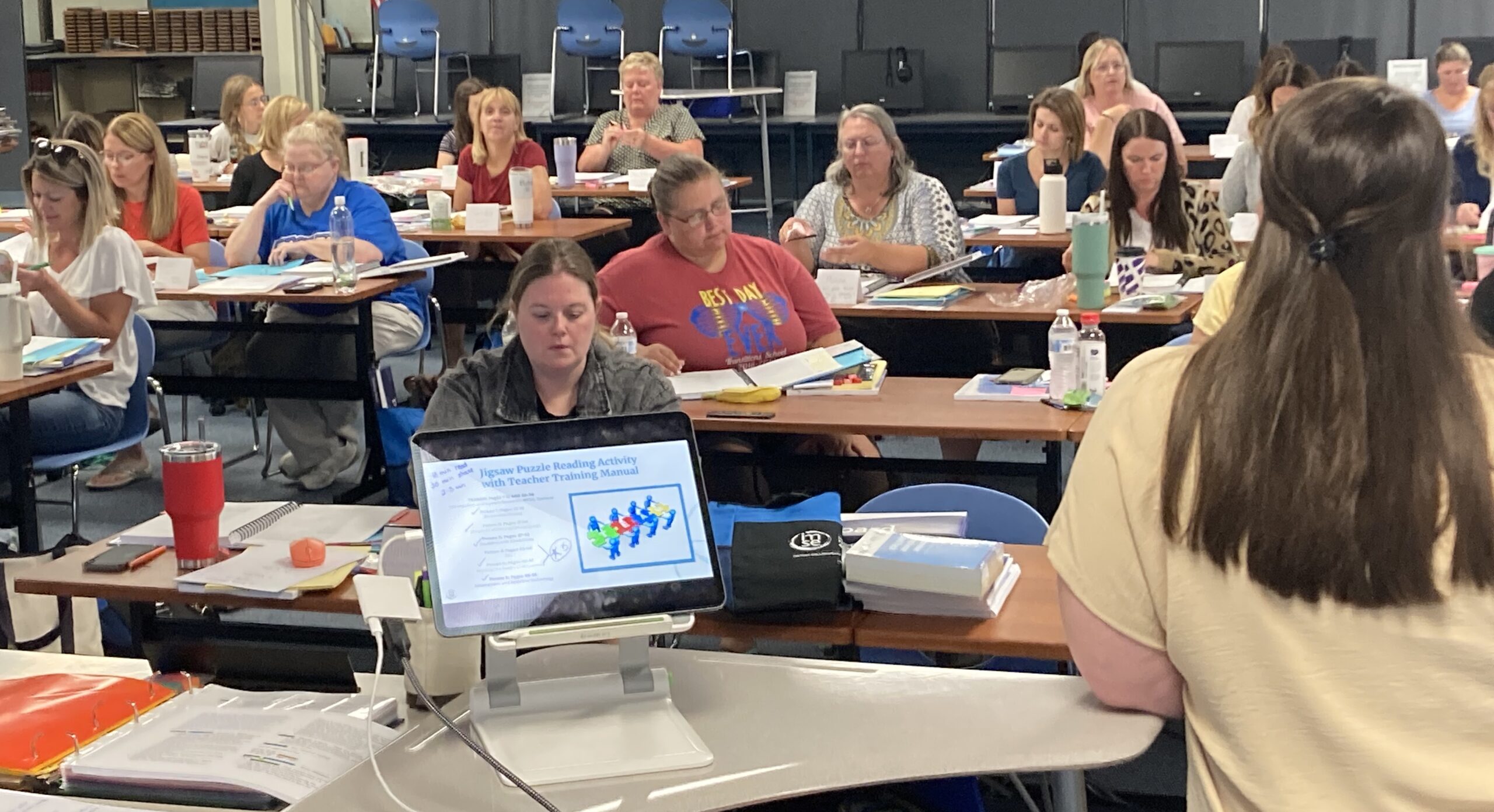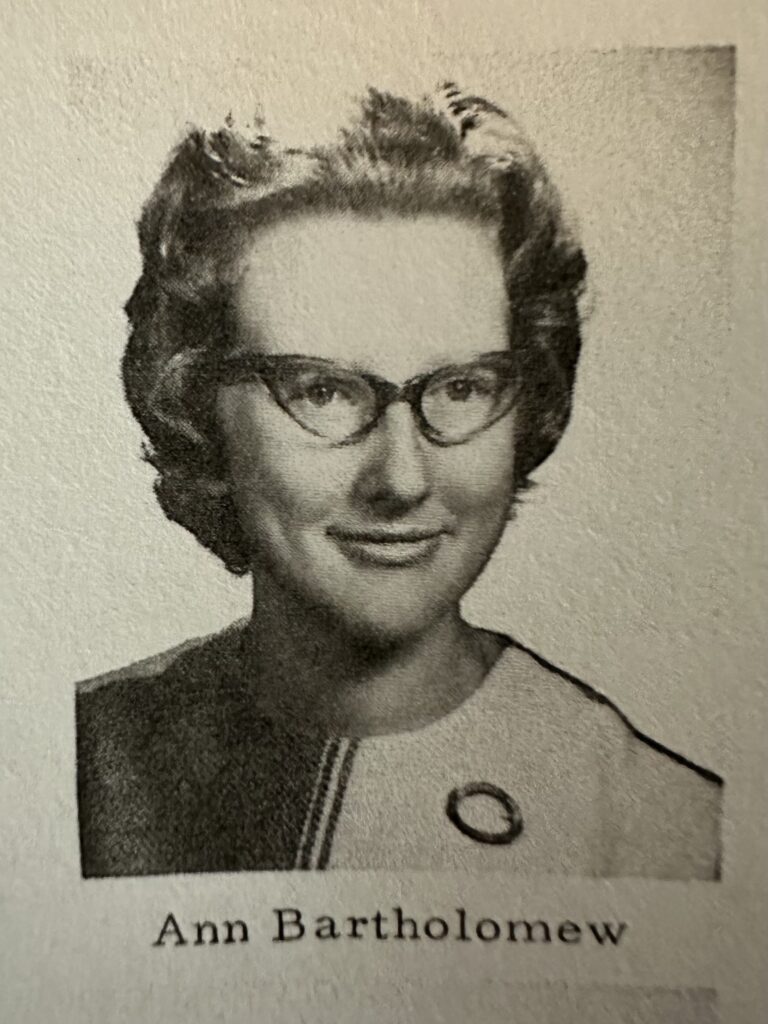‘Hope and a dream’ turns into week-long class for learning methods for teaching reading to children

QUINCY — Julie Schuetz searched for resources to help her son after he was diagnosed with dyslexia, but she struggled to find help during the pandemic.
She took matters into her own hands and took a sabbatical from practicing law, training herself and using the tools she discovered.
Schuetz started the Reading Advocates of West Central Illinois in February, hoping to start a discussion among parents and educators about the research and science behind the methods of teaching reading to children.
Now 64 educators are receiving 30 hours of training at no cost this week in the Quincy High School library.
“Well, it was kind of a hope and a dream,” Schuetz said. “Thinking maybe in a couple of years, we could maybe get some money, maybe get a person or two trained. To have 64 people trained this summer, it’s just really incredible.”
The Tracy Foundation and the Community Foundation Serving West Central Illinois and Northeast Missouri are providing funds to cover expenses for the educators.
Julie Stratman, assistant superintendent of the Regional Office of Education, spread the word. Local educator Crystin Harper is teaching the class.
“Our teachers are going to have an understanding of the structure and foundation of the English language as well as the research behind it,” Harper said. “Teachers are going to be able to evaluate and teach students in areas of phonological awareness, word recognition, spelling and writing. They’re learning the orthography (the conventional spelling system) of our language.
“Within this course, we’re going to be talking about the science of reading. We’re going to be using this methodology to teach our students and then we’re going to be talking about how to do it.”
Harper, a Master Level 4 Instructor of the Institute of Multi-Sensory Education, provides an example.
“It’s a kindergarten rule called the ‘cat-kite’ rule,” she said. “C and K make the same sound, but how do I know when to use the C and when to use the K? Well, there’s a rule for that. So, this is something that we teach our kindergarteners, but I can tell you 80 percent of the adults I teach have no idea of this rule. I have a master’s degree in curriculum instruction assessment and a master’s degree as a K-12 reading specialist — and I wasn’t taught that (the science of reading).”
“There’s been a disconnect where you have researchers doing their thing, and teachers doing their thing and not finding a common connecting point,” Schuetz said. “With the literacy rates being low, people started looking for solutions.”
The Illinois State Board of Education reports 38 percent of students were reading at their grade level before the pandemic. That figure is now at 30 percent.
Stephanie Stephens, a second grade teacher from Rooney Elementary School in Quincy, is participating in the five-day class.
“Honestly, I think (literacy education is) a statewide issue in Illinois,” she said. “Illinois and many states around the country are revising a lot of their legislation around how we teach reading and what kind of programs that we use. You only have exposure to things that the district has exposed you to, so you just don’t know what else is out there. I’m confident that I’m going to be able to implement pieces of it to the whole group in a way that’s beneficial. I’ll be able to implement intervention within the classroom for those struggling readers.”
None of this week’s activities would be happening without a mother of a dyslexic child providing the spark.
“It feels so much like kismet,” Schuetz says. “It’s just been kind of lucky for me. I’ve approached everything like, ‘Can we do this?’ We don’t know until we’ve tried it. That just speaks to what a really great community we live in. We just need to find people willing to go out there and ask the questions.”
“Teachers work really, really, really hard to make sure they’re helping their struggling readers,” Stephens says. “It’s really exciting to have this new strategy. We want kids reading … not to end up in special ed when maybe they actually don’t have a disability. This is going to be great, because it’s going to give more teachers the opportunity to try something different with struggling readers.”
Miss Clipping Out Stories to Save for Later?
Click the Purchase Story button below to order a print of this story. We will print it for you on matte photo paper to keep forever.

